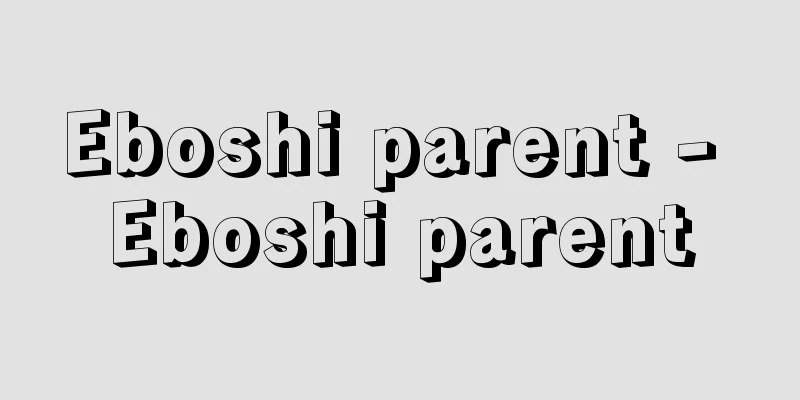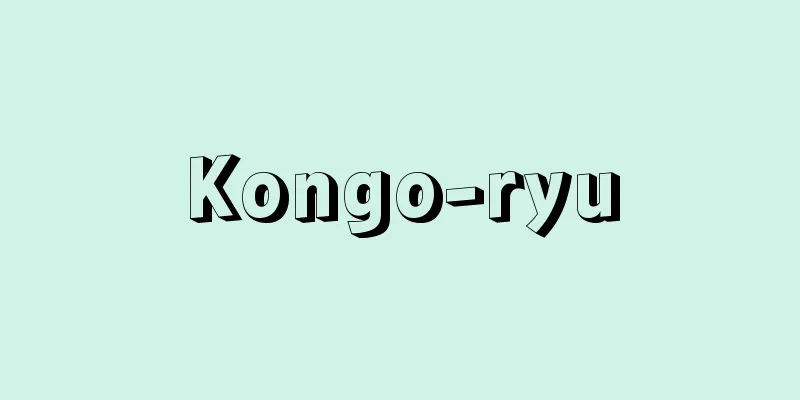Eboshi parent - Eboshi parent

|
A temporary parent appointed when a boy comes of age. There are various names such as Genpuku-oya and Heko-oya. Some have looser names such as Yoboshi-oya, Yubushioya, Ebushioya, and Ebesu-oya. The child is called Eboshi-go. Eboshi is a headgear descended from the Keikan worn by ancient government officials, and in the society of nobles, a ceremony called Uikoburi was held at the time of coming of age, where the child wears the crown and eboshi for the first time. Even in the society of medieval warriors, the person who puts the eboshi on the child at the coming of age ceremony was called Eboshi-oya and was highly valued, and a custom arose of forming a temporary parent-child relationship with the person who came of age (kanja). At that time, it was customary to take one character of the name of the Eboshi-oya to determine the child's name. Eventually, the custom of wearing Eboshi declined around the 16th century, but the name Eboshi-oya remained whenever the coming of age ceremony was repeated, and continues to this day. Generally, these social parents tend to be influential people in the village, and they will form a fictitious parent-child relationship with this person as oyakata (boss) and kokata (subordinate). A reciprocal relationship of protection and service between the two parties will usually continue throughout their lives. In addition, the social parent for girls at the time of coming of age is called kaneoya (iron parent) in contrast to the eboshioya for boys, but in some cases the social parent for girls is also called eboshioya. [Takeda Dan] [Reference] |Source: Shogakukan Encyclopedia Nipponica About Encyclopedia Nipponica Information | Legend |
|
男子成年時にたてる仮の親。元服親、ヘコ親など各種の名称がある。ヨボシオヤ、ユブシオヤ、エブシオヤ、エベスオヤとなまる所もある。子のほうは烏帽子子(えぼしご)。烏帽子は古代の役人が用いた圭冠(けいかん)の系統を引く被(かぶ)り物で、公家(くげ)社会では元服に際し、初冠(ういこうぶり)といって冠、烏帽子を初めて頂く儀式が行われた。中世武家社会でも、元服に烏帽子をかぶせる役は烏帽子親とよんで重視され、元服した当人(冠者(かんじゃ))と仮の親子関係を結ぶ習わしがおこった。そのとき烏帽子親の名前の一字をもらって名のりを定める風もみられた。やがて、16世紀ごろからは烏帽子をかぶる習慣は衰えたが、烏帽子親の名称は元服祝いが繰り返されるたびに残り、今日に及んでいる。この仮親には一般に村内の有力者を求める傾向があり、これと親方(親分)・子方(子分)の関係、すなわち擬制的親子関係を結ぶことになる。双方の間には庇護(ひご)と奉仕の互酬関係が一生にわたって続けられるのを常とする。なお、男子の烏帽子親に対して女子の成年時の仮親を鉄漿(かね)親というが、女子の場合をもエボシオヤとよぶ所がある。 [竹田 旦] [参照項目] |出典 小学館 日本大百科全書(ニッポニカ)日本大百科全書(ニッポニカ)について 情報 | 凡例 |
Recommend
Mihrab (English spelling) miḥrāb; mehrāb
A type of niche in the innermost wall of a mosque....
Wolfram von Eschenbach
1170? - 1220 or 30 A representative court epic poe...
Liesegang phenomenon - Lieseganggensho
This refers to the ring pattern that occurs as a ...
Quasi-Western style architecture
…He became an apprentice to master carpenter Shim...
Alexias
…Daughter of the Byzantine Emperor Alexios I Komn...
Sambandar (English spelling) Campantar
A Shaivite saint and religious poet in medieval So...
Rhea americana (English spelling) Rhea americana
…A species of bird in the Rheidae family of the o...
Ueshiro
〘 noun 〙 Just before planting rice, water is poure...
Military service
Also called "guneki." Military obligati...
Kochi - Coach
[1] In ancient times, this area was the area aroun...
Order - O-daa (English spelling) order
An architectural term that can be translated as &...
Individual - Individual
...Most of them are thrillers and melodramas. (4)...
Persimmon Sada - Kakitei
...Subsequently, Chinese archaeologists and ceram...
Veronica longifolia (English spelling) Veronica longifolia
… [Eiichi Asayama]. … *Some of the terminology th...
Kitashinagawa Post Town
...However, the "Innkeeper's Register&qu...









